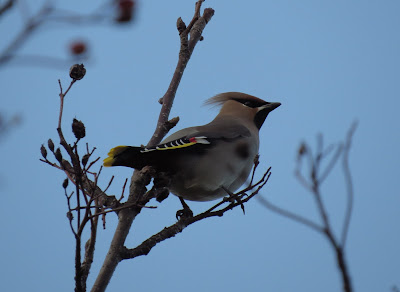So to get out birding yesterday, even though it was for business rather than for pleasure, was a treat! I was at my wintering bird survey site in Merseyside and it was a tad chilly to say the least. I had clear skies, ground frost and a cold 10 - 15 mph southeasterly wind. Rather than giving you a 'why and wherefore' of what I recorded I had the following bits and pieces of nominal interest; two Song Thrushes, 34 Long-tailed Tits, a Tree Sparrow, eleven Linnets, four Buzzards, 1248 Pink-footed Geese, three Goldcrests, 23 Goldfinches, a Great Spotted Woodpecker, three Coal Tits, four Stock Doves, 69 Curlews, a singing Mistle Thrush, a female Sparrowhawk, 220 Woodpigeons, 36 Carrion Crows, 12 Blue Tits, 152 Black-headed Gulls and 111 Jackdaws.
Curlews
Pink-footed Geese
The only other news is that I won't be doing any ringing locally anytime soon, as the Obs falls within a 10 km surveillance zone surrounding an outbreak of Avian Influenza at Hy-Fly hatcheries near Pilling. Hy-Fly rear Pheasants, Red-legged Partridges etc and the H5N8 virus was found in some Pheasants at the site. The surveillance zone generally stays in place for 30 days, so at the earliest it will be 24th February before I can ring again within the Obs recording area; so it's just birding for the next 30 days presuming life doesn't get in the way again!













